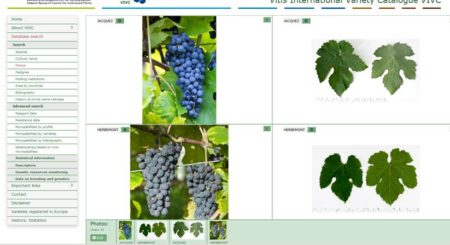It seems I may have inadvertently walked into a little bit of a controversy with that post on Herbemont. Dr Jerry Rodrigues of the University of Cape Town hopes for a resolution in a comment on the post:
Let’s hope that sooner rather than later, researchers in the Department of Viticulture and Enology or at the National Clonal Germplasm Repository (University of California, Davis) or the Plant Genetic Resources Unit (PGRU) at Geneva, New York will not be afraid to make public the microsatellite DNA markers for the true Herbemont.
Whereas Erika Maul from the Julius Kühn-Institut, which maintains the Vitis International Variety Catalogue (VIVC), has this to say in an email:
Herbemont and Jacquez are maintained in European collections and seem not to be endangered. These photos from VIVC could assist to confirm identification.

Dear Sir
The Vitis International Variety Catalogue (VIVC) database headed by Dr Erika Maul faces the same difficulty with the identification of the true Herbemont as the gene banks in the USA.
The VIVC only has the ampelographic description as an identification criterion — which I maintain could possibly be that of one of the many Herbemont seedling cultivars that are floating around in the world.
My initial remarks (please see Herbemont redux) concerning the lack of microsatellite DNA (simple sequence repeats or SSRs) identification data in the USA for the true Herbemont also applies to the VIVC.
The VIVC also seems reluctant to publish the microsatellite DNA — my question is why?
I don’t buy the usual answer that those European databases put forward for not publishing the microsatellite DNA data, namely, that a particular grapevine cultivar does not breed true-to-type.
That attitude, unfortunately, is simply an excuse for a database to to evade its responsibilty to the public at large.
We need to know the truth, so why not make the microsatellite DNA public?
Thanks,
Dr Jerry Rodrigues
(25 Feb 2019)